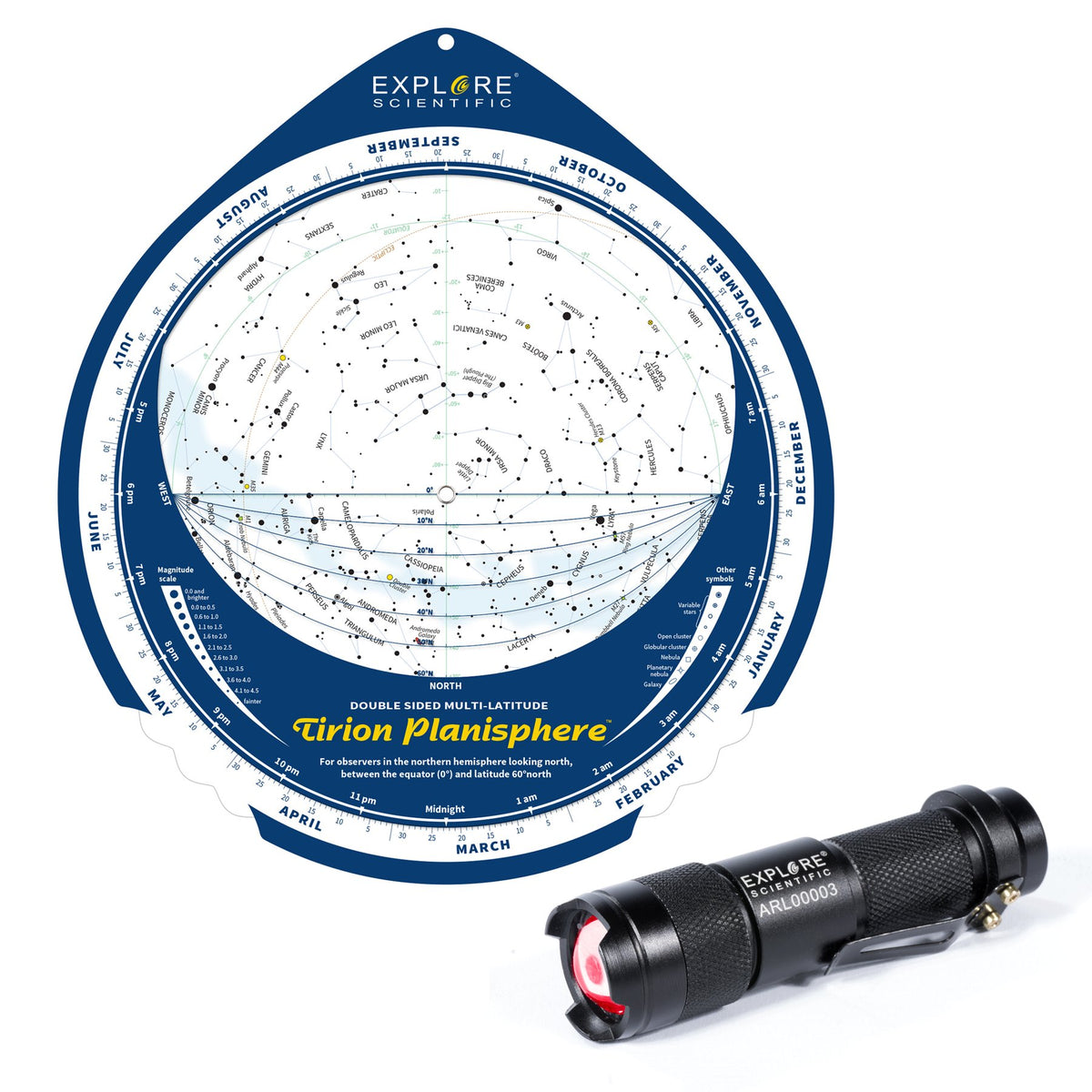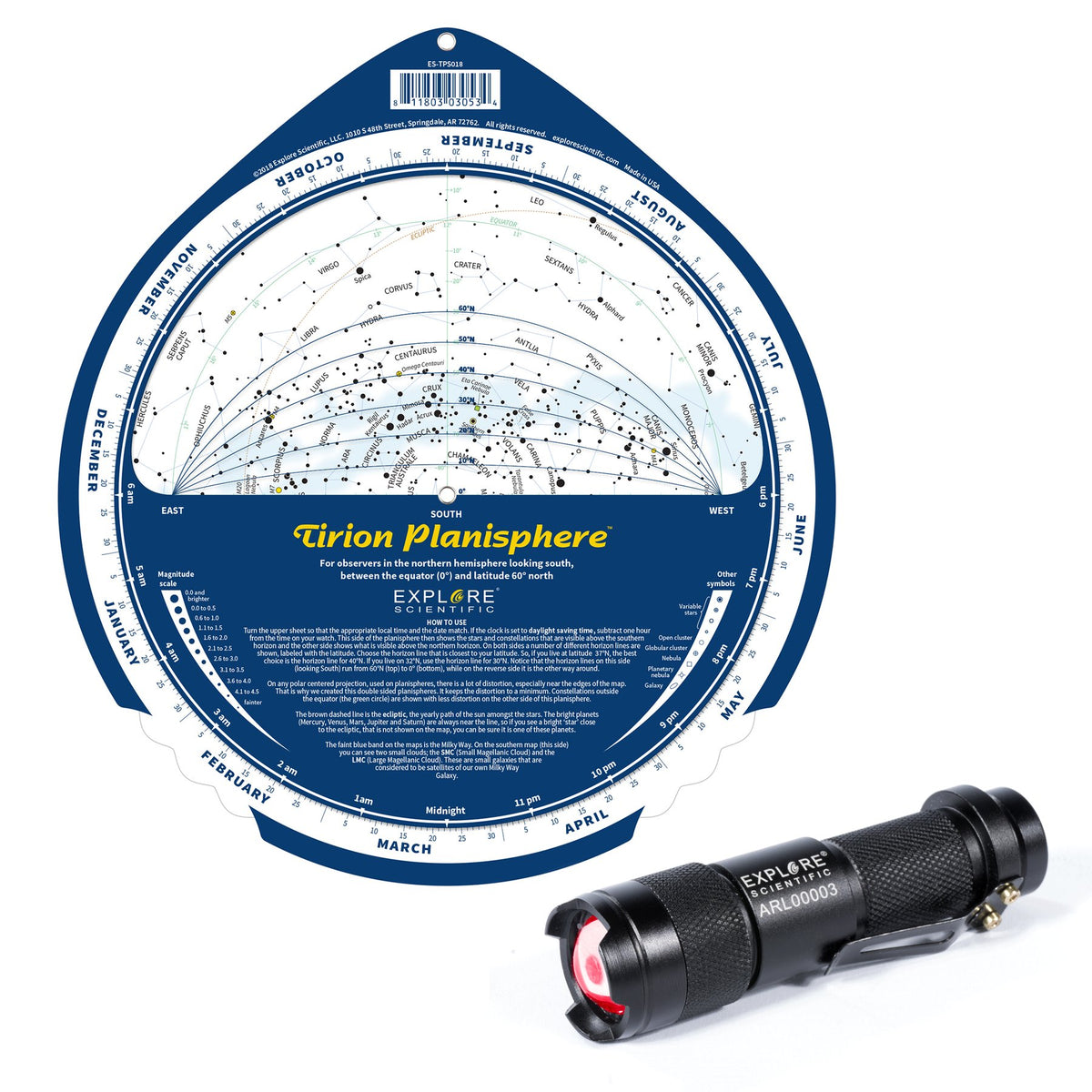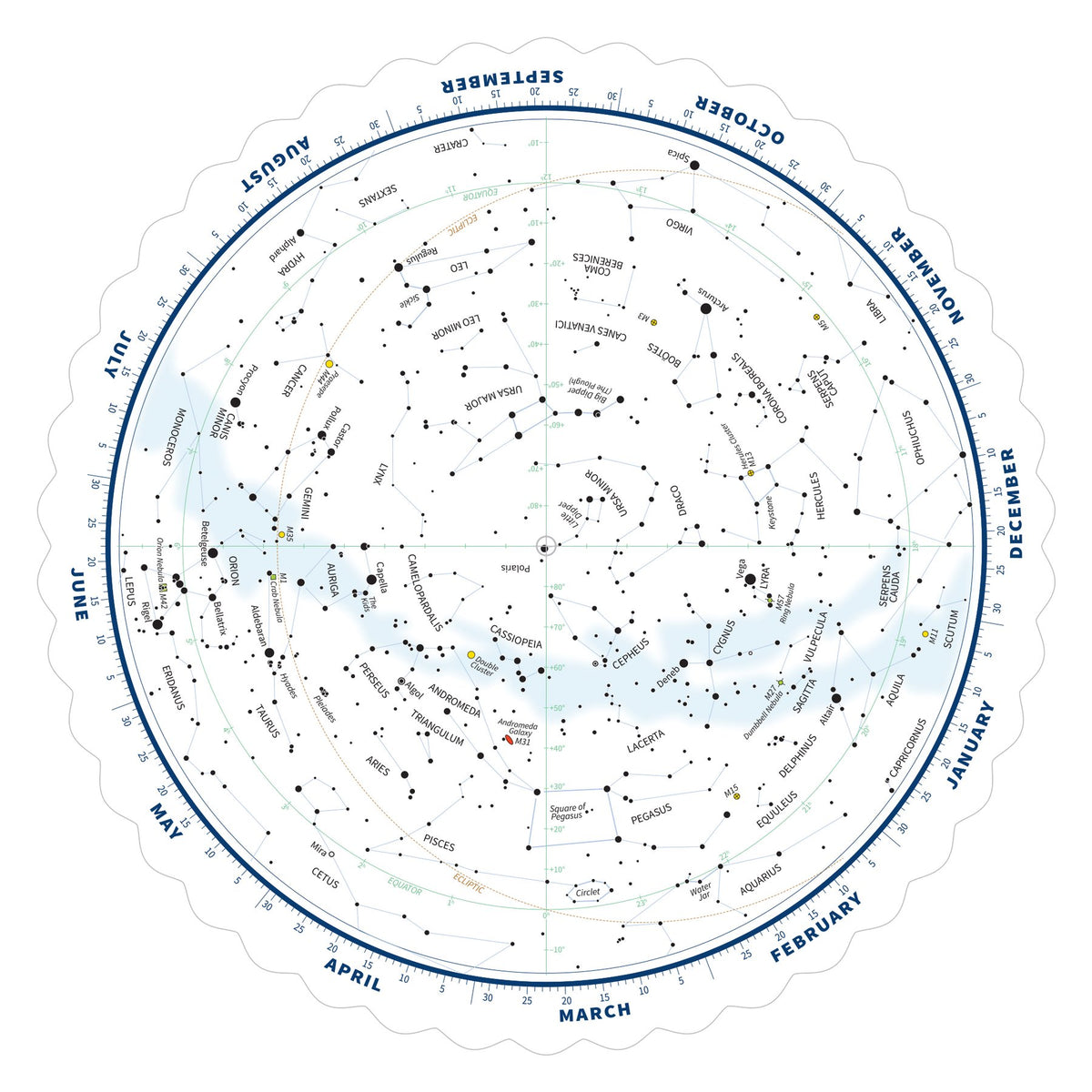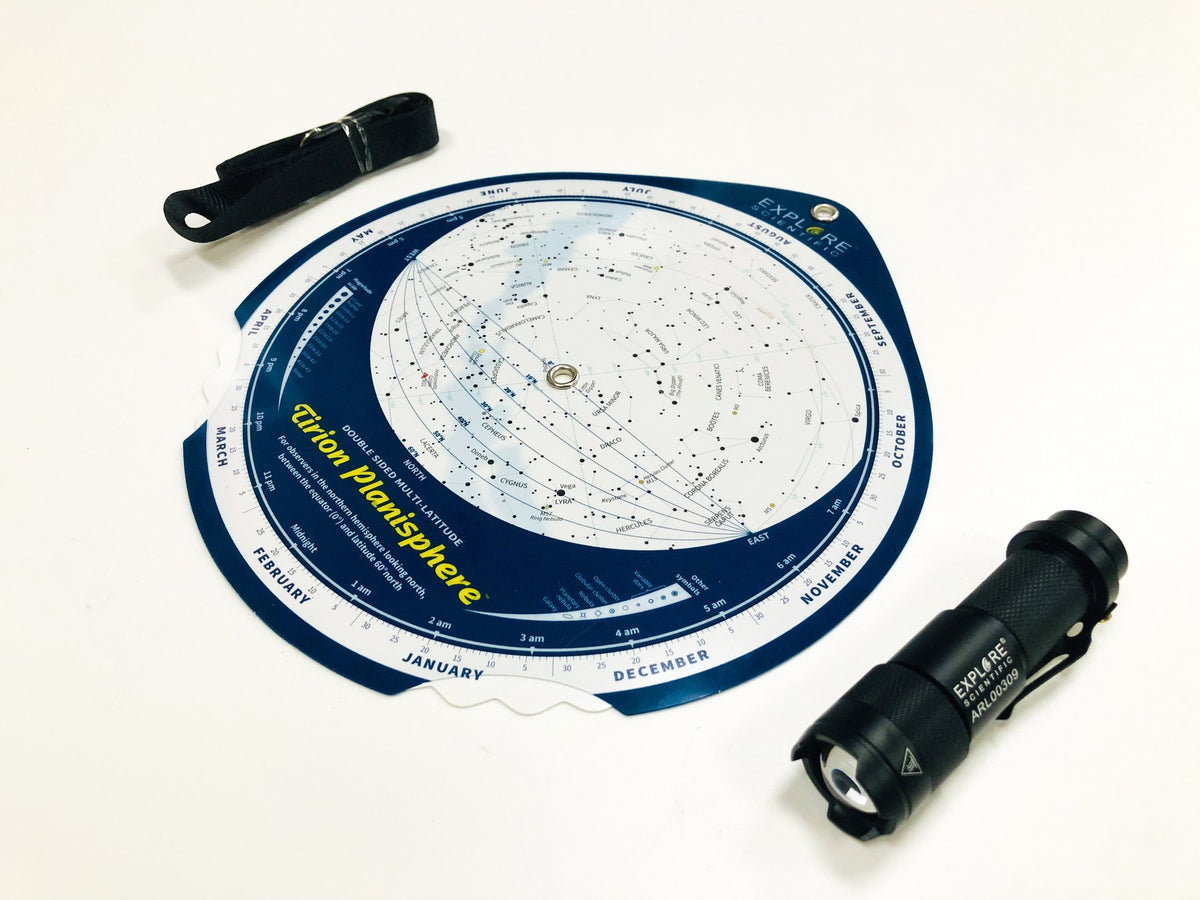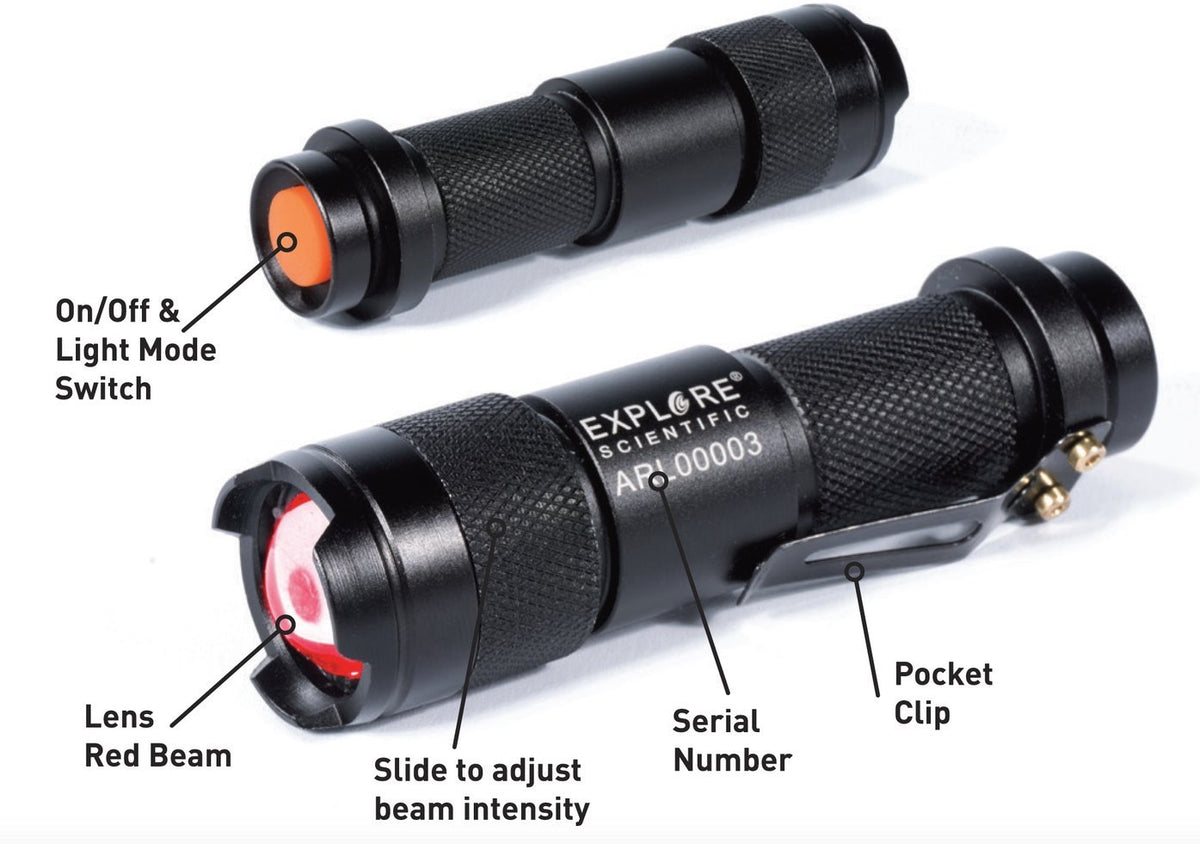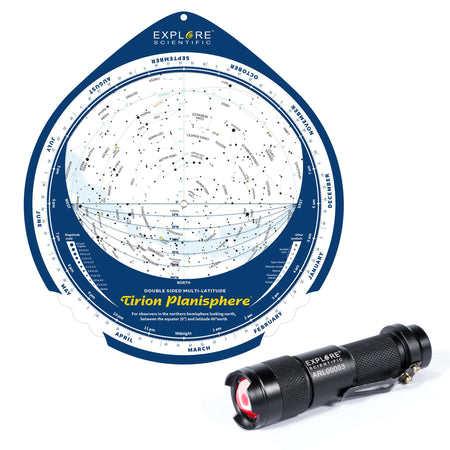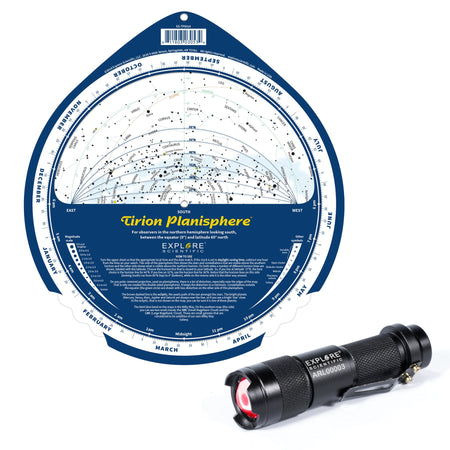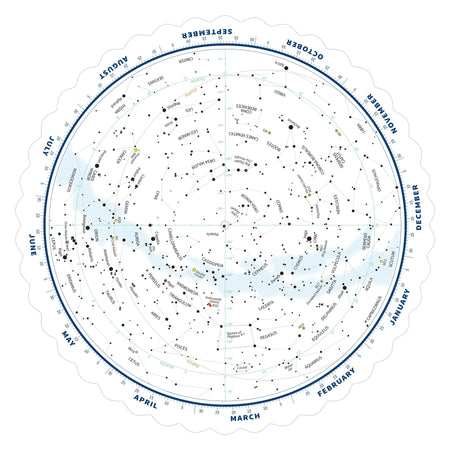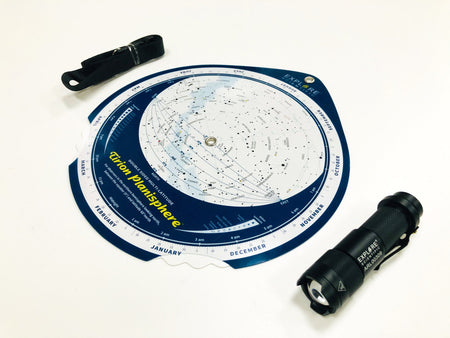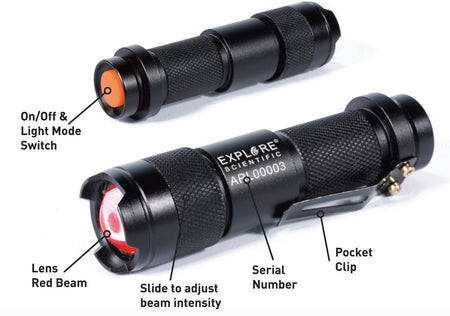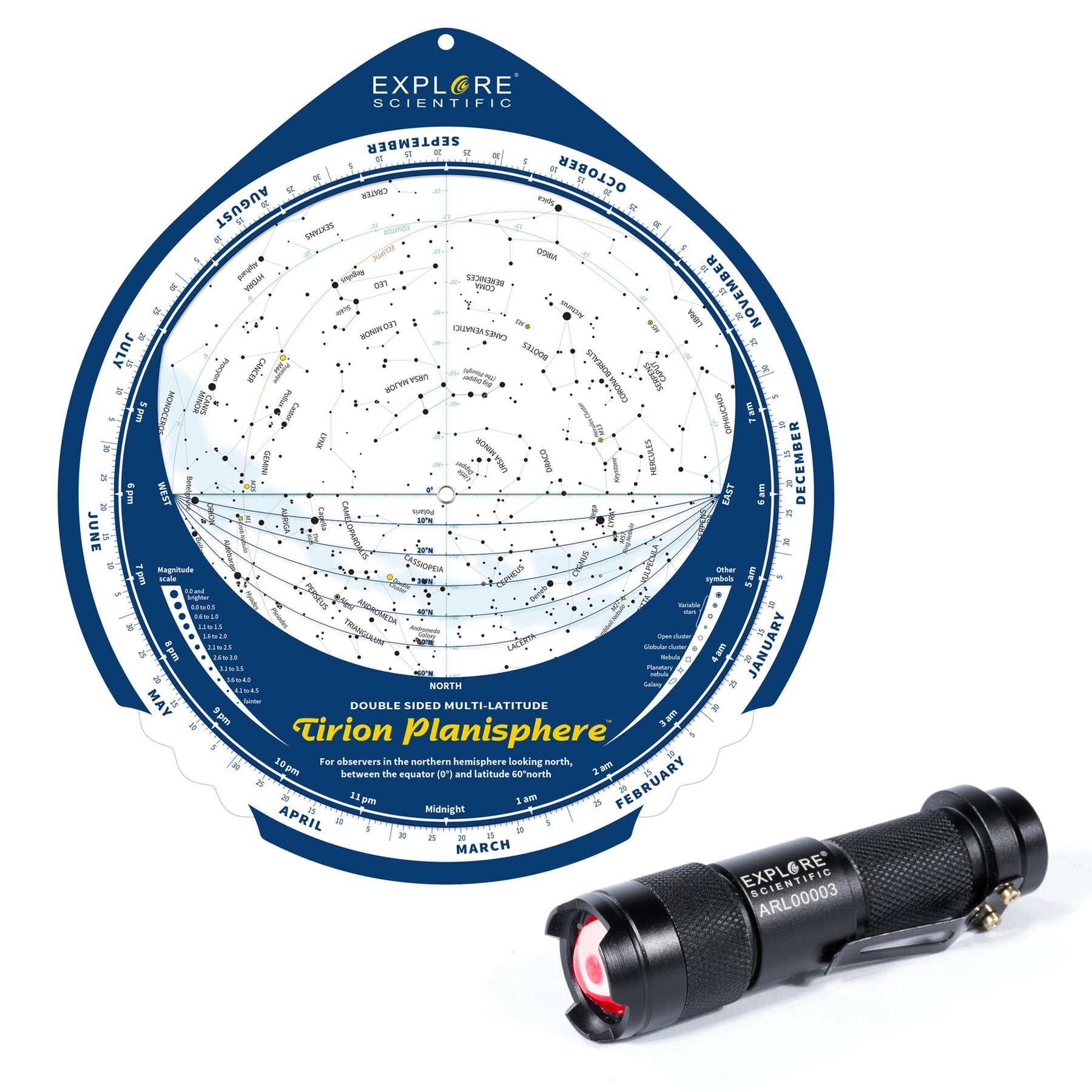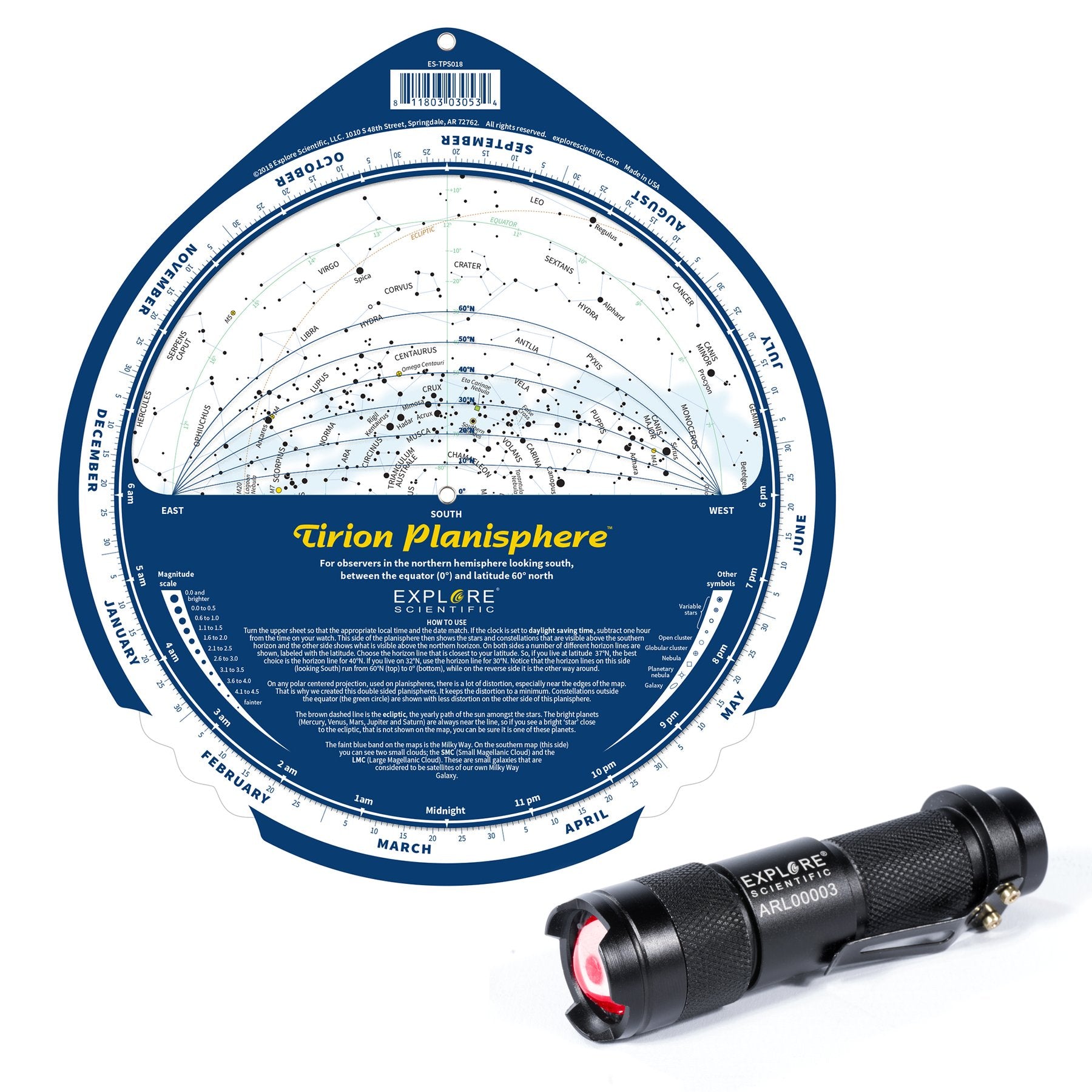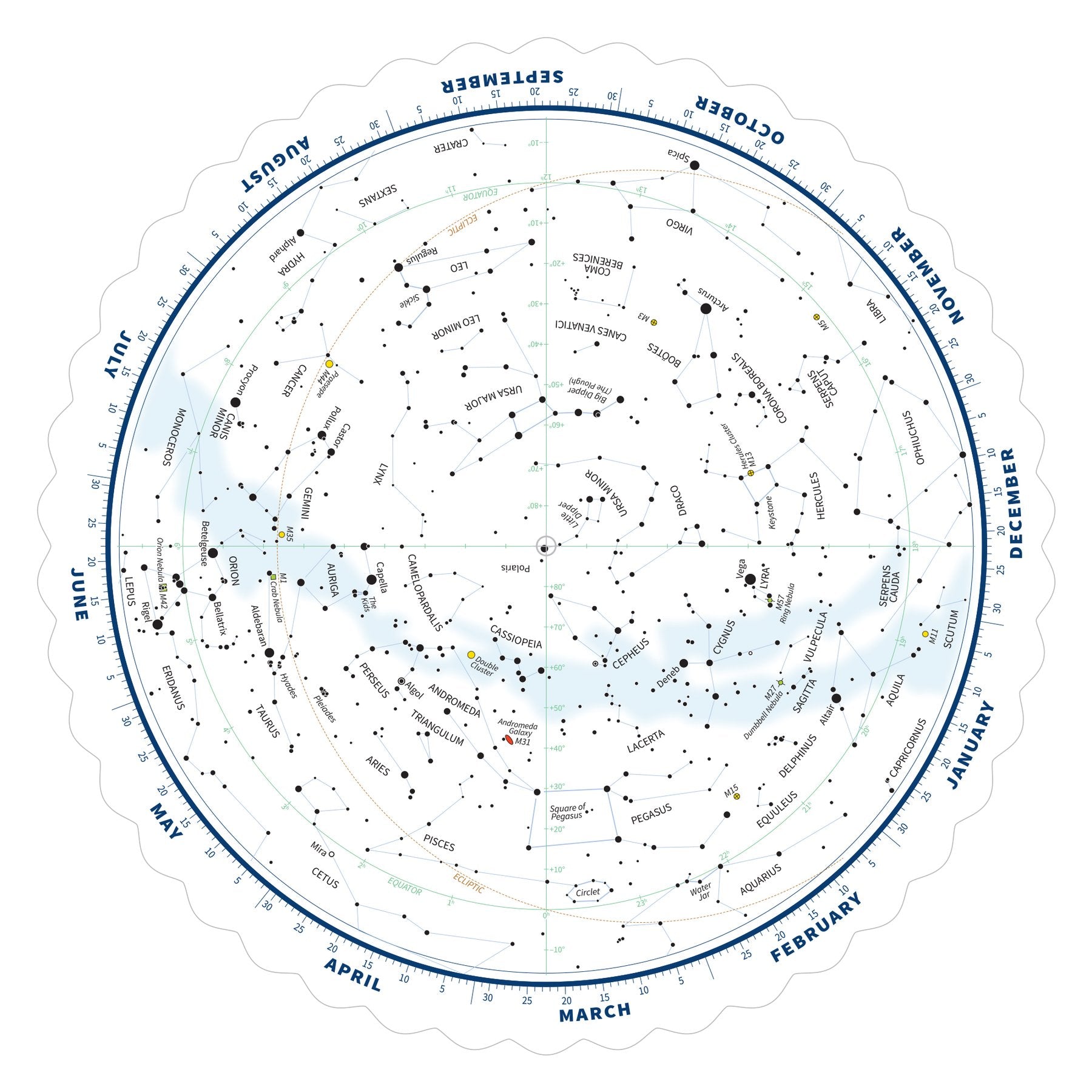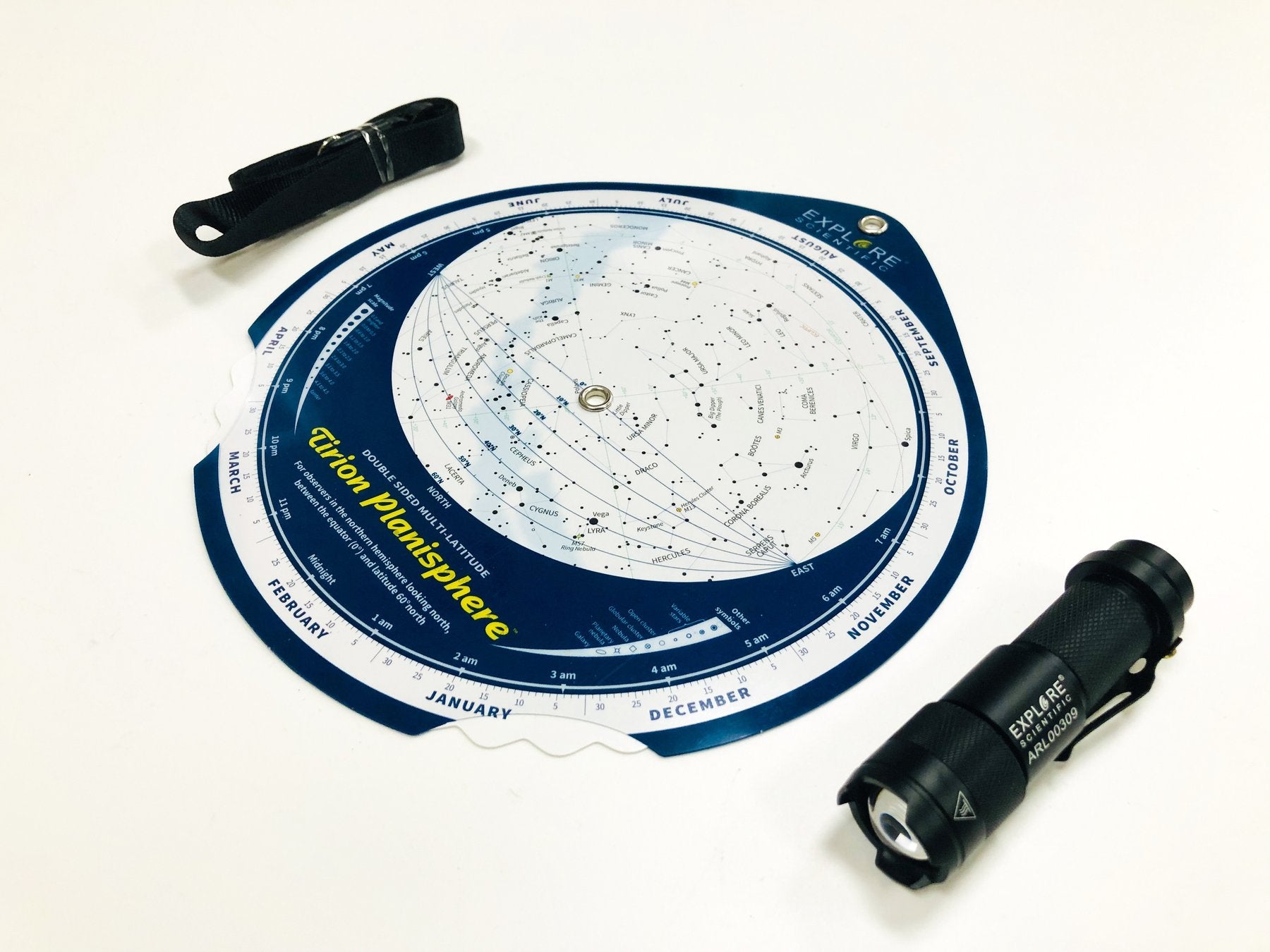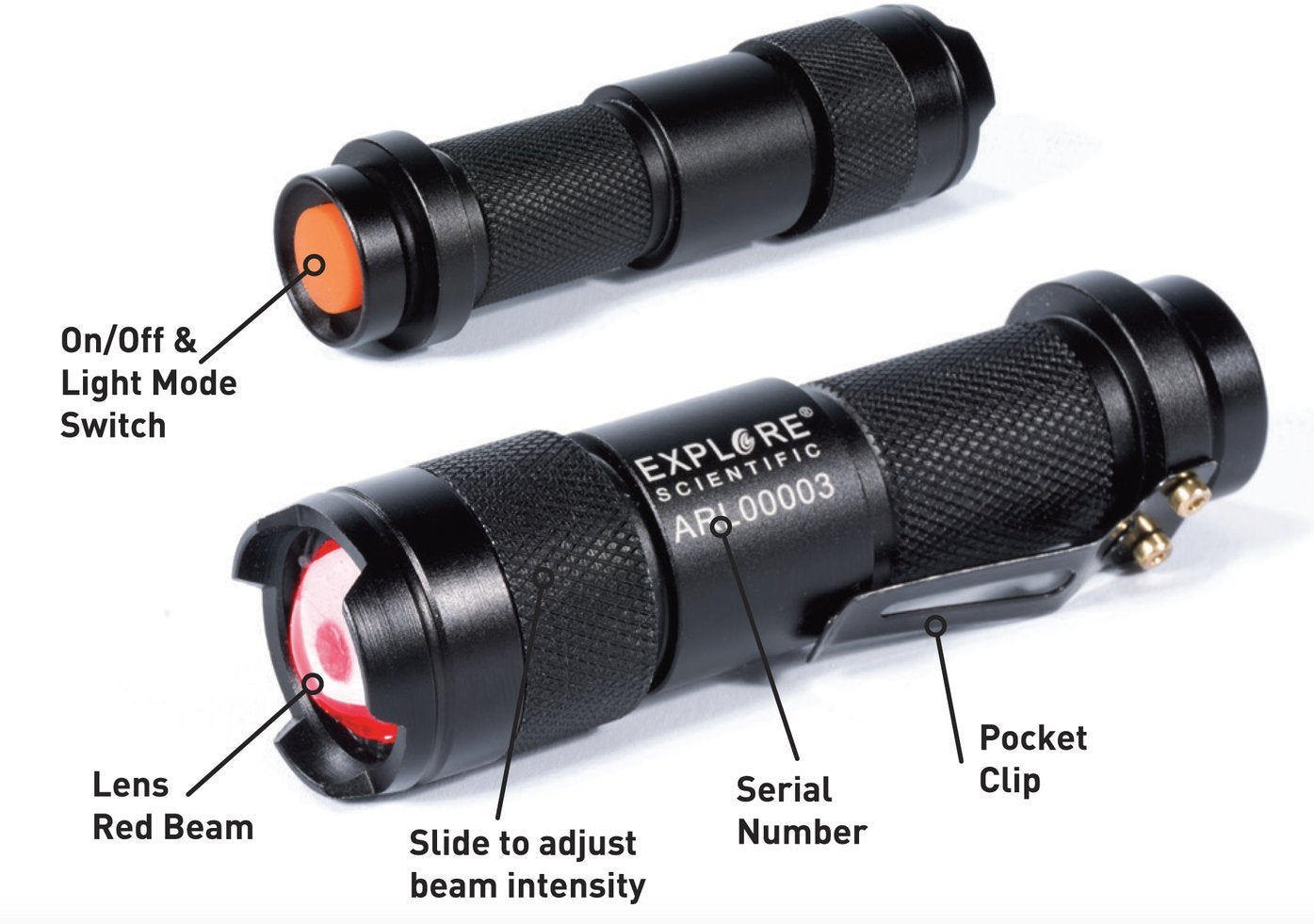Explore Scientific Tirion Multi-Latitude Planisphere with Astro R-Lite Red Flashlight - ES-TPS018-ARL
Couldn't load pickup availability
Product details
- SKU EXP-ES-TPS018-ARL
Explore Scientific Tirion Multi-Latitude Planisphere & Astro R-Lite
The Tirion Double-Sided Planisphere from Explore Scientific can help guide your explorations of the sky throughout the year. Created by noted celestial cartographer Wil Tirion, this planisphere works over a vast range of Northern hemisphere latitudes (0° to 60° north). It uses a double-sided design to minimize distortion. It is made of durable plastic and the celestial dials are secured with non-corrosion brass rivets.
To use, you simply rotate the planisphere’s celestial dial to match the current date and time, aim the pointed end up and face north to see which constellations are rising, transiting, and setting. The see-through cover has latitude boundaries from 0° to 60° north in 10 degree increments. Flip the planisphere over to see the positions of stars in the sky when you are facing south in the Northern hemisphere.
Tirion’s celestial symbols indicate star magnitudes from 0.0 and brighter down to 4.5 and fainter, there are also symbols for galaxies, planetary nebula, nebula, globular clusters, open clusters, and variable stars. With other types of planispheres, there is distortion, especially near the edges of the map. That is why Wil created this double-sided planisphere to keep the distortion to a minimum. Constellations outside the equator (the green circle) are shown with less distortion on the other side of the Tirion Planisphere.
The brown dashed line is the ecliptic, the yearly path the sun appears moving along the stars. The bright planets (Mercury, Venus, Mars, Jupiter and Saturn) are always near the line, so if you see a bright object close to the ecliptic that is not shown on the map you can be sure it is one of these planets.
The faint blue band shown on the maps is our galaxy, the "Milky Way". On the southern side at the planisphere you can see two small clouds; the SMC (Small Magellanic Cloud) and the LMC (Large Magellanic Cloud). These are small galaxies that are considered to be satellites of our own Milky Way Galaxy.
Based in The Netherlands, Tirion has been crafting stars maps since the 1970s and became a professional uranographer shortly after the publication of his highly regarded Sky Atlas 2000.0 in 1981.
Perfect for use with the Tirion Double-Sided Planisphere, Explore Scientific’s Astro R-Lite is a red beam flashlight designed specifically for amateur astronomers. This versatile device will allow you to read star charts or make equipment changes without disturbing the crucial dark adaptation of your eyes for nighttime observing.
The Astro R-Lite in a sturdy black aluminum body is the perfect size to be tucked into a pocket and weighs just 2. 7 ounces with the battery installed. It offers a built-in belt/pocket clip and comes with a neck strap for quick access. Uses one AA battery for power, battery is NOT included.

